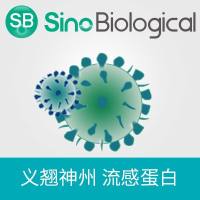Detection of Legionella in Various Sample Types Using Whole-Cell Fluorescent In Situ Hybridization
互联网
互联网
相关产品推荐

Hemagglutinin/HA重组蛋白|Recombinant H1N1 (A/California/04/2009) HA-specific B cell probe (His Tag)
¥2570

Recombinant-Mouse-Macrophage-scavenger-receptor-types-I-and-IIMsr1Macrophage scavenger receptor types I and II Alternative name(s): Macrophage acetylated LDL receptor I and II Scavenger receptor type A; SR-A CD_antigen= CD204
¥12852

N-Butyldeoxynojirimycin,72599-27-0,film (dried <i>in situ</i>),阿拉丁
¥4326.90

Goat Anti-Human Whole Serum
¥1500

γ-氨基丁酸试剂盒,用于样本中GABA含量检测,微量法,GABA Content Detection Kit
¥358
相关问答

